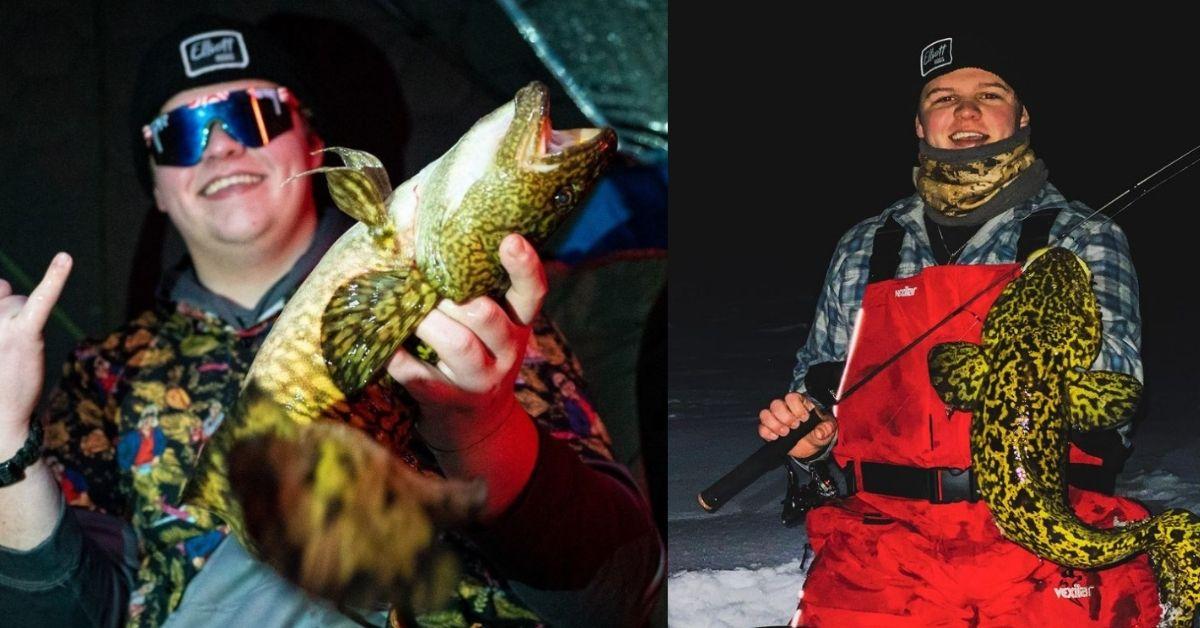Greaser Fishing 101: How To Catch Burbot Through The Ice
By: Sam Sommerness
Sam Sommerness is a Minnesota native, tournament angler, and ice fishing fanatic dialed on the burbot fishing scene in his home state. Since the birth of sportfishing in Minnesota, burbot have gotten a bad wrap, and because of this, most anglers prefer to target walleye, panfish, pike, or trout through the ice.
However, there's been a renaissance in ice fishing, specifically centered around a glowing interest in burbot fishing. This once glanced over, and unsung native species is now at the top of many "bucket list fish" wish lists. In addition to slamming lures, fighting hard, and receiving little fishing pressure, freshly cooked burbot is known as "poor man's lobster."
An Instagram Famous Fish
For years, the burbot has been thought of like a trash fish and a nuisance by many ice anglers. That was up until the last few years as burbot have been brought into the spotlight through social media. However, there were still some hard-core burbot anglers that have been chasing these grease balls for years. Burbot are now gaining popularity among ice anglers as they are starting to see the power and beauty in these fish. However slimy they might be, the leopard print patterns these fish have are truly spectacular. Never will you find two burbots with the same pattern. They are different for every fish. Some burbot don't have leopard print at all and are just brown or mustard-colored from some regions.
Where Can You Find Burbot In North America?
A quality burbot caught inside a well-built ice shanty that was likely pulled on the ice with a full-size truck.
Burbot habitat ranges all across the northern US and Canada. They primarily live in deep cold water lakes and rivers. They spend most of their summers in deep cool water. During the winter, burbot like to leave the deep at night and feed. They primarily feed on crayfish and other small baitfish. Burbot typically feed on steep drop-offs that go into deep water with a rocky or sand bottom. They will travel up and down the drop-off anywhere between 30-60 feet of water. Finding a drop-off with rock or sand bottom is key. During late February into early March, burbot will come out from the deep and onto shallow 10-20 feet sand and rock flats during the day and spawn. You might be thinking, why is that so special? Well, burbot spawn in what are called spawn balls. Spawn balls are anywhere from 5-50 burbot, all slithering and squirming so tight you can't tell where one fish begins and another ends.
How Big Do Burbot Get?
Another quality burbot, this time caught in a collapsable, portable ice shanty, capable of being pulled by hand.
Burbot can range in sizes from two to twenty-five pounds. So for my gear, I like to use a medium-heavy or heavy action ice rod. I paired up with a 2000 or 2500 size spinning reel and ten-pound braided ice fishing line. I like to use glow-in-the-dark jig heads and spoons tipped with 2-3 minnows for lures.
Just about anyone can catch burbot. Since they primarily swim along the bottom, the best way to see them is by pounding a glow-in-the-dark spoon or jig head tipped with two minnows. Then drop it to the bottom and jig on the bottom. The burbot feels the vibration and comes to investigate. Once it finds the bait, it will inhale it.
On the off chance you miss the hookset or hook the fish and lose it right away, don't stress out, drop back down and keep jigging. More than likely, it will eat it again. I've had burbot hooked and come off three times before I hooked it on the fourth try and got it in. Burbot is an extremely fun fish to fight through the ice. Because of their eel-like tail, they can roll up or pull themselves back down the hole as you are trying to land them. This is why they've become one of, if not my favorite, fish to target through the ice.
Updated November 2nd, 2021 at 6:17 AM CT


